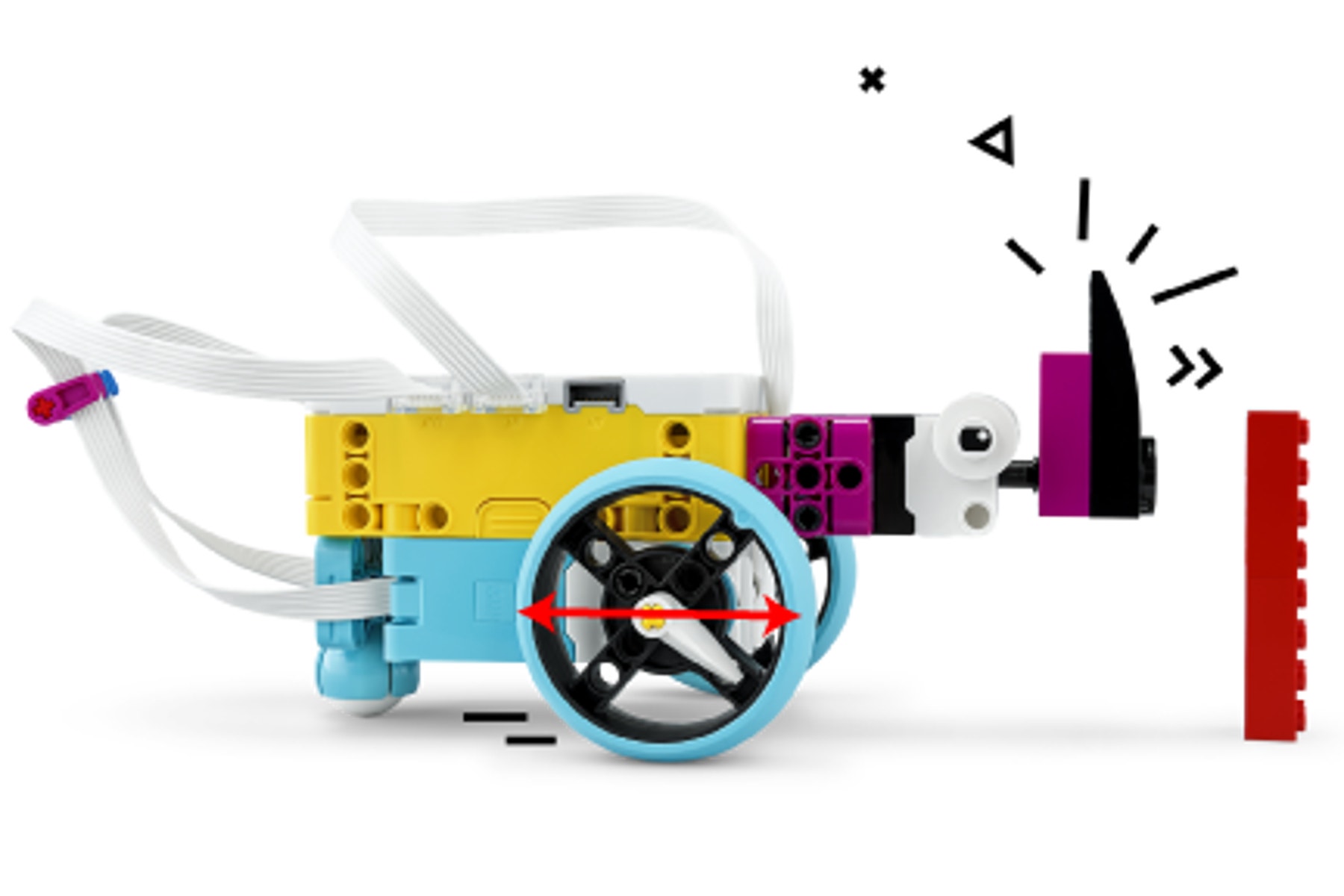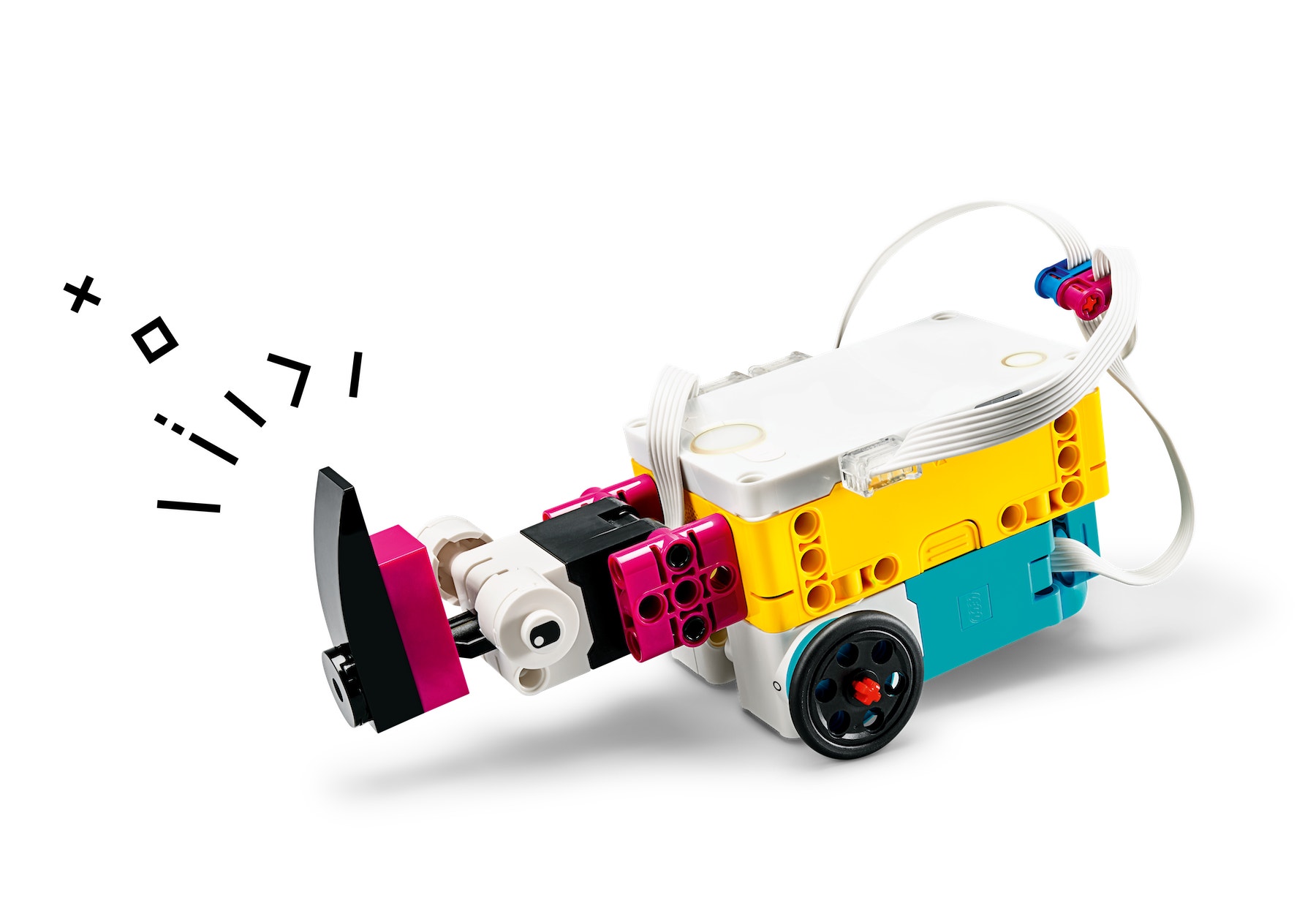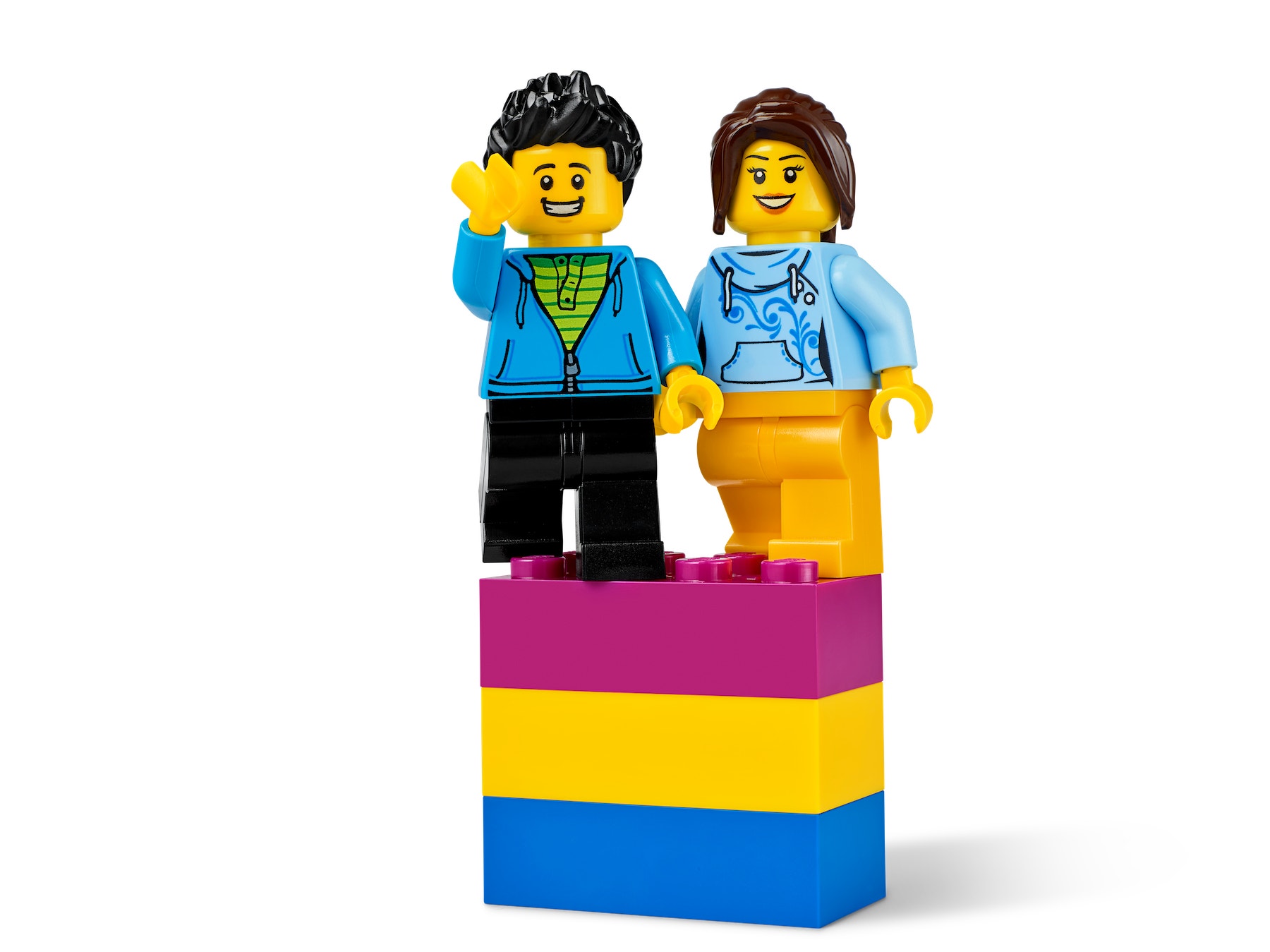Going the Distance
Program a rhino to start and stop before it hits something.

Lesson plan
1. Prepare
- Read through the pupil material in the LEGO® Education SPIKE™ App.
- If you feel that it's necessary, plan a lesson using the getting started material in the app. This will help to familiarise your pupils with LEGO® Education SPIKE™ Prime.
2. Engage (3 Min.)
- Use the ideas in the Ignite a Discussion section below to engage your pupils in a discussion relating to this lesson.
- Use the video to explain the lesson.
3. Explore (12 Min.)
- Have your pupils work in pairs to build the rhino model.
- Ask them to program the rhino to move one metre, stopping as close as possible to an upright LEGO brick, without touching it.
- Have each pair of pupils place their rhino one metre from the LEGO brick, run their program and see how they did.
- Encourage them to record their calculations so that they can then refer back to them during the next two challenges.
4. Explain (10 Min.)
- Discuss the different methods that could be used to calculate how to make the rhino stop exactly one metre from its starting position.
- Challenge your pupils to use their existing calculations to recalculate their programming block values to make the rhino stop at a distance of 120 cm.
- Allow only one trial for this challenge.
5. Elaborate (15 Min.)
- Have your pupils program the Force Sensor (on the rhino’s nose) to stop the motors when it hits a ‘wall’ of bricks.
- Ask your pupils to explain the difference between using calculations to stop at an object and using a sensor.
- Don't forget to leave some time for tidying up.
6. Evaluate
- Give feedback on each pupil's performance.
- In order to simplify the process, you can use the assessment rubrics that have been provided.
Ignite a Discussion
Start a discussion about how your pupils would normally learn to use something new.
- Would they read the user manual?
- Would they use a quick start guide?
- Would they just tinker until they worked it out for themselves?
Have your pupils watch this video to see what they're about to do.

Building Tips
Partner Build
This model can be built in two parts.
- Part A: the rhino's body
- Part B: the rhino's head
To limit the building time that’s required, you can do all of this lesson except the final challenge using only the body (a simple Driving Base).

Wheel Circumference
Wheel circumference is an important concept in this lesson. The wheel you'll be using has a diameter of 5.6 cm and travels a distance of 17.6 cm per rotation.

Coding Tips
Main Program

Possible Solution

Other Programs

Differentiation
Simplify this lesson by:
- Substituting a distance that corresponds to a multiple of full wheel rotations:
▷ Given a wheel diameter of 5.6 cm and one wheel rotation covering 17.6 cm, it takes 5 rotations to cover 88 cm
- Encouraging your pupils to work with rotations instead of seconds, even if they feel comfortable working with seconds. This will increase the precision of their Driving Base motion because rotations (or degrees) aren't linked to the speed of the motors
Take this lesson to the next level by:
- Asking your pupils to change the speed of the rhino to 25% instead of 75%
- Challenging your pupils to use smaller wheels, then observing how quickly they solve the challenge

Assessment Opportunities
Teacher Observation Checklist
Establish a scale that suits your needs, for example:
- Partially accomplished
- Fully accomplished
- Overachieved
Use the following success criteria to evaluate your pupils' progress:
- The pupils worked as a team towards a common goal.
- The pupils worked to make every team member a more effective contributor.
- The pupils worked to help every team member reach new goals.
Self-Assessment
Have each pupil choose the brick that they feel best represents their performance.
- Blue: We worked as a team and solved the challenges together.
- Yellow: We worked as a team to solve the challenges while encouraging everyone to succeed.
- Violet: We worked as a team to solve the challenges and reached new goals while encouraging everyone to succeed.
Peer-Assessment
Encourage your pupils to provide feedback to one another by:
- Having one pupil use the coloured brick scale above to score another pupil’s performance
- Asking them to present constructive feedback to one another so that they can improve their group’s performance during the next lesson

Language Arts Extension
To incorporate the development of language arts skills:
- Challenge your pupils to make arguments for the most effective way of calculating the programming block values.
- At the end of the lesson, ask each pupil to explain their chosen method to the class.
Note: This will require additional time.
Maths Extension
In this lesson, you'll already explore key maths-related concepts, including:
- Estimating distances
- Using Pi x D to calculate wheel circumference
To add another maths-related element:
- Ask your pupils to create a value table in which they record wheel rotation and the distance travelled.
- Challenge your pupils to use this table to predict the number of wheel rotations that are needed in order to travel a specified distance (e.g. 2.5 m, 400 cm, 3500 mm).
Note: This will require additional time.
Teacher Support
The pupils will:
- Use estimation to evaluate distances
- Use test findings and deductive reasoning to improve a program
LEGO® Education SPIKE™ Prime Set
CAS Computing Progression Pathways
Algorithms:
Recognises that different solutions exist for the same problem. (AL) (AB)
Programming and Development:
Designs, writes and debugs modular programs using procedures. (AL) (DE) (AB) (GE)
Data and Data Representation:
Analyses and evaluates data and information, and recognises that poor quality data leads to unreliable results, and inaccurate conclusions. (AL) (EV)
Programming and Development:
Knows that computers collect data from various input devices, including sensors and application software. (AB)




